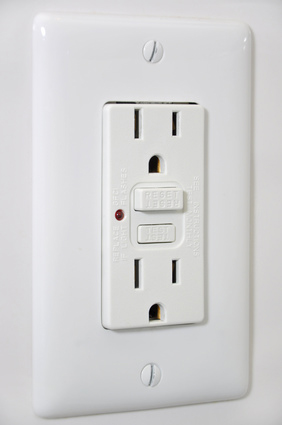AFCI vs GFCI: What's the Difference and Where Do You Need Each?

When it comes to electrical safety in your home, few things matter more than the right protection devices. Two of the most important are the AFCI and GFCI, and while they might sound similar, they serve very different roles. Knowing the distinction can help you meet safety codes, protect your family, and avoid costly hazards.
What Is an AFCI?
An Arc Fault Circuit Interrupter (AFCI) is designed to protect against dangerous electrical arcs. An arc occurs when electricity jumps between damaged or loose wires, creating extreme heat that could easily ignite nearby materials. AFCIs detect these arcs and immediately shut down the circuit to prevent fires.
Homes today require AFCI protection in more areas than ever. According to updated building codes, living rooms, bedrooms, dining areas, and hallways often fall under these rules. With new standards emerging, homeowners are paying closer attention to AFCI requirements 2025 Texas, since the state has aligned with the National Electrical Code in recent years.
What Is a GFCI?
A Ground Fault Circuit Interrupter (GFCI) protects people from electrical shock. Unlike AFCIs, which guard against fire hazards, GFCIs cut power when they sense electricity straying from the circuit and potentially traveling through water or the human body.
You'll see GFCI receptacles most often in kitchens, bathrooms, laundry rooms, and outdoor areas where moisture is common. Updated codes require GFCI for kitchens and bathrooms without exception, as well as in garages, unfinished basements, and near pools or hot tubs.
AFCI vs GFCI: Understanding the Difference
The simplest way to compare them is this: AFCIs protect against fires, while GFCIs protect against shocks. They don't replace each other, and in some situations, you may need both.
For example, an outlet in a modern living room will likely require AFCI protection due to fire risk. Meanwhile, a bathroom outlet must be GFCI-protected because of water exposure. But in some locations, like a kitchen countertop, both hazards exist-so the best solution may involve outlets or breakers that combine AFCI and GFCI functions in one.
Do I Need Both?
This is one of the most common questions homeowners ask: do I need both? The answer is yes, depending on where the outlets are located. AFCI and GFCI requirements target different risks, and many homes need both types of protection for complete coverage.
Combination outlets and breakers are now available, allowing electricians to install protection against both arc faults and ground faults in a single device. These hybrid solutions are especially helpful in kitchens and laundry rooms where moisture and potential wiring issues meet.
Code Compliance and Safety in Texas
Texas follows the National Electrical Code, and updates in 2025 continue to expand the areas where AFCI and GFCI are required. For homeowners in San Antonio, this means working with a licensed professional is crucial to make sure your wiring and outlets meet current regulations. Attempting to navigate these codes without training could leave your home unsafe and noncompliant.
That's why hiring a San Antonio electrician expert ensures not only that your home meets the letter of the law but also that your family is truly protected. From installing the right outlets to upgrading your electrical panel, a trusted electrician makes the process smooth and reliable.
For reliable electrical protection and code-compliant installation in San Antonio, call John Jones Electric and speak with an experienced electrician today.
